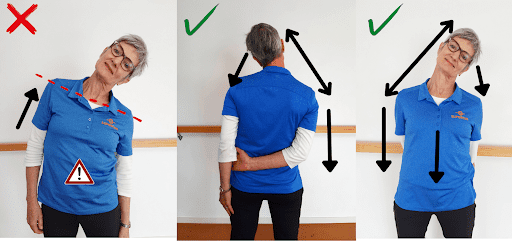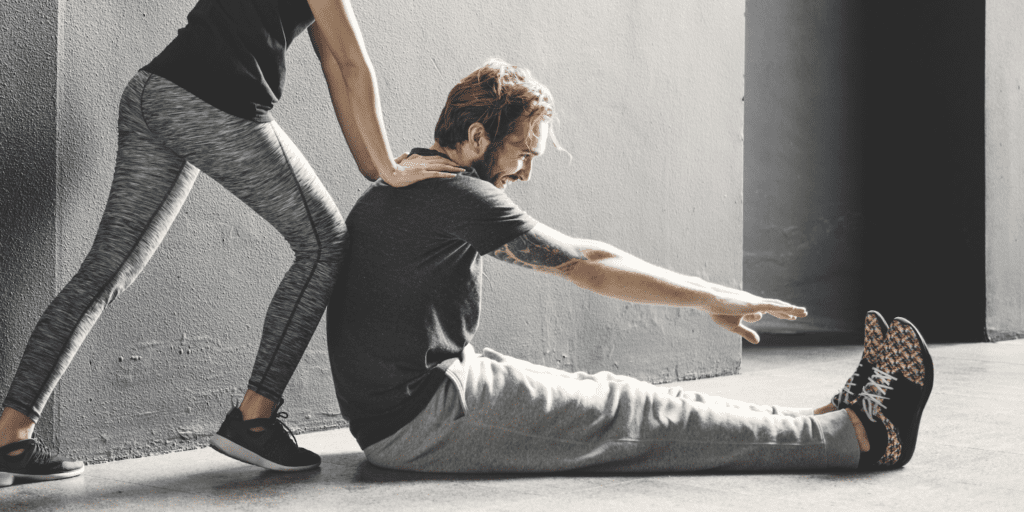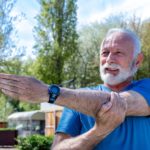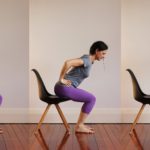
Marya Hopman
(NZQA PT, Rehab Trainer, NOWANZ Instructor)
What is a stretch? A dictionary defines it as straightening or extending of one’s body or part of one’s body to its full length, typically to bring the muscle or tendon under tension with the aim of improving
- muscle’s elasticity
- control
- flexibility
- range of motion
To reduce muscle rigidity and tension, and relax stiff joints, a daily full body stretching routine is recommended because it will also help you maintain a full range of body motion.
Muscle stiffness
If we feel stiff or sore, either in our muscles or joints, it can be instinctive to stretch! This is not just a human trait. Take a look at your pets, particularly after a nap! But though it may be instinctive, we aren’t particularly good at it.
Sounds simple enough but most of us are sabotaging our results by missing a few simple principles. Here are several refinements to make your stretches more effective and enjoyable.
How to make a two-way stretch
When we stretch, we really should be moving both ends of the muscle away from each other, but what we tend to do is stretch from only one side. Or even worse, we move “with” the stretch instead of “against” it. Let’s try a neck stretch.

Try tilting your right ear to your right shoulder to stretch the muscles down the left side of the neck. More than likely, you lifted your left shoulder as you tilted, in effect “moving with your stretch”. Now try this!
Draw your left arm behind your back, drawing and pinning your left shoulder down. Now, try tilting your right ear to your right shoulder. It won’t go as far but you should feel the stretch more intensely.
You should also feel the stretch radiate further, from the base of your ear all the way down your arm.
Intensify the stretch — belly to spine
Let’s take it one step further. As you stretch, draw your belly strongly into your spine and draw the front, back and sides of your ribcage downwards towards your hips.
Notice how this further intensifies the stretch by further anchoring the lower arm. We’re still not done!
As you draw your belly in, exhale long and slow. Close your eyes and visualise relaxing through the muscles, tendons and joints. Let gravity do its thing by letting it draw your body downward and increase your stretch even further.
A better way to stretch your hamstring
Another good example is the hamstring stretch.
In standing position, we firstly need to extend the muscles of the calf and the hamstring. Step your right leg forward, lift the toes of the right foot to flex the foot, and shift your weight to your back leg, bending forward from your waist.

Now, we need to anchor both ends of the muscles. To do this, lift the toes of the right foot to flex the foot as this will anchor the ankle. Then bend forward from your waist and push your hips back, keeping your back flat as this will anchor your hips.

Next, anchor the knee joint.
In the past, we tended to straighten the extended leg but for the hamstring we’ll get a more effective stretch if we keep the knee of the extended leg soft.
To intensify the hamstring stretch, push the hips back further.
To further enhance the calf stretch, pull the toes closer to your knee.
Take a breath in, and as you breathe out long and slow, draw your belly into your spine and let the rest of your body relax.
We used to think of stretching as bringing a muscle under tension, but tension is created with resistance and stretching shouldn’t be about resistance – it should be about letting go. It’s about moving a muscle into the end range and then internally letting go of that tension in the muscles and tendons.
Conclusion
- Ease your muscle to its full length without force.
- Anchor both ends of the muscle by moving the joints on either side, away from the muscle being stretched.
- Intensify your stretch by drawing your belly into your spine and your ribcage down towards your hips.
- Further intensify your stretch by breathing out long and slow in a relaxing exhale, letting your body become heavy and soft, while keeping the joints and core in their anchoring positions.
- Visualise the muscles, joints and tendons letting go and the tension releasing.
RELATED — Relieve back pain: 5 Beginner Yoga Exercises, Stretches and Poses
However, sometimes all of this is easier said than done, which is why practice makes perfect. To read more about similar topics and have good guidance around them, I would suggest that you join our healthy community and Subscribe to our Newsletter.
That way, you will always be informed when a new article, regarding the topics that you are interested in, will be published.
Marya Hopman is a REPs registered Personal Trainer and Corrective Exercise Specialist with over 10 years of experience. She is a founder of OptimalMe Fitness and co-founder of SuperCue, a not-for-profit organisation which creates specialized exercise programmes for older adults available online, on DVD and in the community. In her OptimalMe Studio in Hawkes Bay she specializes in corrective exercise for individuals and groups with a particular focus on older adults and those with Parkinsons. She also provides posture and movement education packages for workplaces.
Marya’s passion is helping people to truly understand what it feels like to have good posture, good movement and good exercise technique. She believes small changes in the way we move are the answer to many aches, pains and injuries and wants to share just how powerful this can be.






